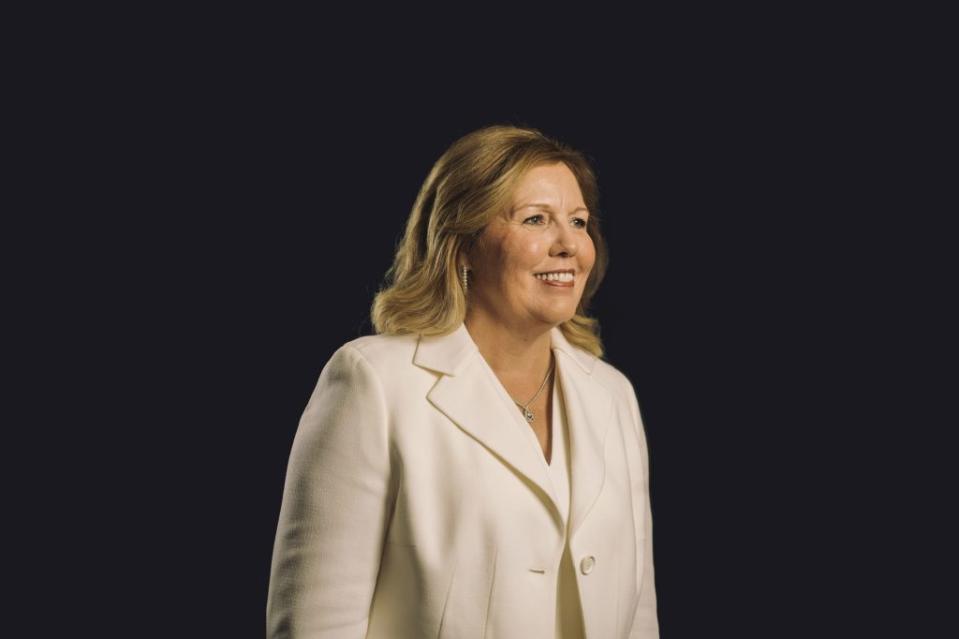The CEO behind Zales and Kay knows when you’re going to get engaged
Good morning, Broadsheet readers! Harvard President Claudine Gay will keep her position after receiving unanimous support from the university's top board, foreign affairs expert Fiona Hill raises concerns about delayed Ukraine aid, and Signet's CEO knows you're going to get engaged before you do. Have a great Wednesday!
- Popping the question. Gina Drosos knows when you're going to get engaged. She's the CEO of Signet Jewelers, the $7.8 billion-in-revenue company behind jewelry brands Jared, Kay, and Zales. And when she took over as CEO six years ago, Signet made a pivot into data.
The company started to study couples and what leads them to get engaged. (Engagement rings and wedding bands make up half of its business). It came up with a list of 45 milestones that are part of the path to a proposal. Once a couple completes 25 to 30 of the items on the list, they are statistically significantly more likely to get engaged.
There are the obvious ones, like moving in together or merging finances. But Signet's data starts earlier in a relationship—from when couples first meet. Going to a sporting event or a concert together—or even a movie—are on the list. (A movie comes first. It's a "lower cash outlay," Drosos explains.) Attending a wedding together, meeting friends, meeting family, acquiring a pet together, and taking a trip that's not for someone else's wedding are all milestones. There are also some less obvious ones: Paying off a chunk of debt and breaking up and getting back together can be part of the journey to an engagement. These milestones are broken up into phases.

Signet started studying these milestones to support its core business—engagement rings—but has found other uses for the research too. With this information, Signet can advertise not just to couples who search "engagement rings" online, but to couples earlier in their relationships. "If a couple is in stage three, we might be talking to them about birthday gifts," Drosos says. "If they're in stage four, we're talking to them about how much to spend on an engagement ring."
Before she became the CEO of Signet (and led a turnaround following major sexual harassment cases under her predecessor), Drosos was a 25-year veteran of Procter & Gamble's beauty business. That's where she learned the power of data. "I have a strong belief that using data to make decisions is a way to drive innovation in a company," she says. At Signet, she built a core data team of about 50 employees and directed hundreds more throughout the company to rely on data in their decision making.
Signet's research has proven useful this year. When the pandemic hit, the company predicted that the jewelry industry would experience a second recession in about three years. Indeed, that's what is happening now given the 3.25 years it takes a typical couple to get engaged and the months- or years-long pauses in dating that COVID caused for some people. "People aren't getting engaged at the rate that they normally would," Drosos says. This year, about 2.2 million Americans got engaged, compared to 2.8 million in a typical year pre-COVID. Drosos expects that slowdown to resolve in 2024.
December is the company's biggest time of year for both gifts and engagement rings. The ten days before Christmas are when "most people are buying that one special jewelry gift for their person," Drosos says.
Signet's also using its data to convince customers to buy jewelry not just for a proposal. "Is moving in together a good gift-giving occasion?" is a question Drosos says her team considers. "Could we talk about marking the milestone with the gift of jewelry?"
Emma Hinchliffe
emma.hinchliffe@fortune.com
@_emmahinchliffe
The Broadsheet is Fortune's newsletter for and about the world's most powerful women. Today's edition was curated by Joseph Abrams. Subscribe here.
This story was originally featured on Fortune.com
